I learned something last week in Montana’s Centennial Valley – Prairie Falcons eat insects.
In the past I’ve only seen them eat birds and small mammals and cursory research had backed up that observation but if you dig a little deeper in your research (Birds of North America Online, for example) you’ll find mention of lizards and insects being included in their diet. My friend (master falconer) Mark Runnels says that “Prairie Falcons will eat anything. In really bad years I have even heard of them feeding on carrion. You’ll never see a Peregrine do that!”
Normally I can’t get anywhere near a wild Prairie Falcon but these falcons were hunting the roads for grasshoppers (it’s my theory that it’s easier for them to see individual hoppers on the road than it is in the thick grass) and the fence posts along the roads made convenient hunting perches that they were reluctant to leave. They would spot a grasshopper from their perch, swoop down and eat it, then return to the same or another nearby post and do it all over again.
I’m embarrassed to include this crappy image but it does show a falcon eating a grasshopper on a road and many other hoppers in the air above the bird. The plane of focus of my 500mm lens with attached teleconverter is only a few inches so you can only see the insects that are in that plane of focus. There would be many hundreds of others that are out of focus and can’t be seen. Thousands more would fly up in thick clouds when disturbed by my moving pickup.
I also found Prairie Falcons eating grasshoppers away from the roads, especially in areas where the grasses were matted down and easier to hunt.
We found this bird clinging to a small wooden post just as a storm squall rolled in. The wind blew very hard (perhaps 50 mph) for about 5 minutes and at the time I was surprised that the bird didn’t take off as we approached and find some cover. It wasn’t until I got home and looked at the images that I figured out why it stayed on this exposed perch while the wind howled. It’s my theory that those huge talons were able to grasp the small wooden post so well that it had more stability there in the wind than it would likely find anywhere else.
When the wind subsided it flew off a short distance to hunt some more.
It landed on this huge ball of rusty old wire and scoped out the area for a good hunting spot.
Then it landed in the short grass to gorge itself on grasshoppers.
By this time the storm and clouds had moved in and I lost the light so these shots were underexposed (I brought them back up during processing which increased the noise). The tradeoff was that underexposing the images gave me enough shutter speed in the poor light to get relatively sharp images.
It was fun watching this falcon hunt. It would pounce on a grasshopper, eat it and then pounce again.
There were so many grasshoppers that at times the falcon seemed distracted by them all. Here the bird is about to grasp one of them in the grass with its talons but is apparently looking at the one a few inches in front of its face. You can see about a half-dozen hoppers in the air in this image, including the one in front of the right wing primaries.
Apparently it’s been a very good year for Prairie Falcons in southwest Montana. While we were there we saw about 15 of them and I believe that most of those were different birds (based on the distance and time involved between sightings). I’m highly encouraged by those numbers, though Short-eared Owl populations in the area have plummeted drastically.
When I began processing images for this post my intention was to do a single post on Prairie Falcons but I ended up with 15 images – too many for a single post (loading time would be cumbersome) so in the end I decided to publish two Prairie Falcon posts. This one about behavior has images of marginal quality but tomorrow’s post includes images of much higher quality.
Ron


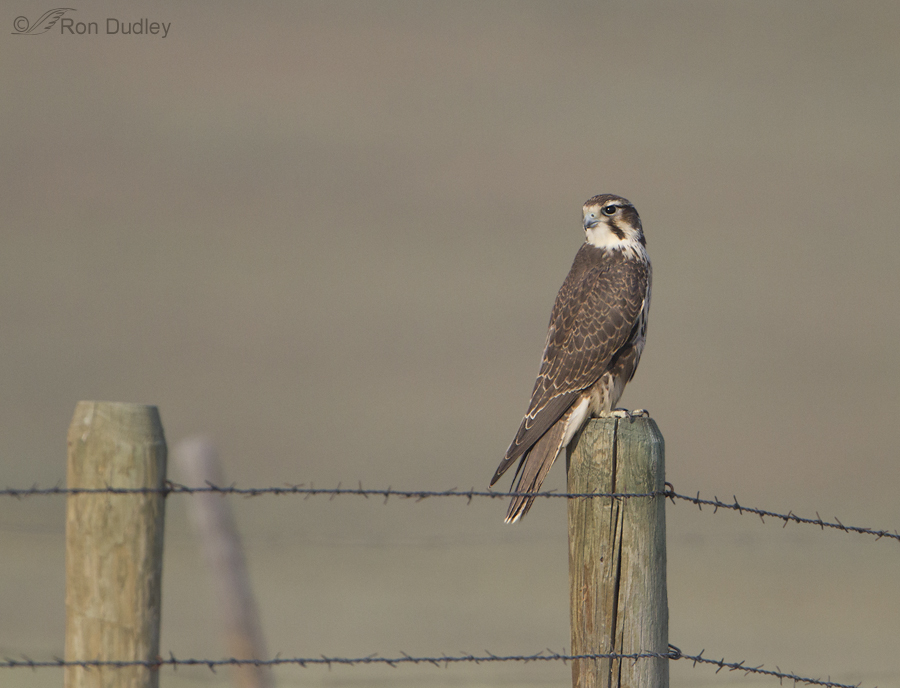
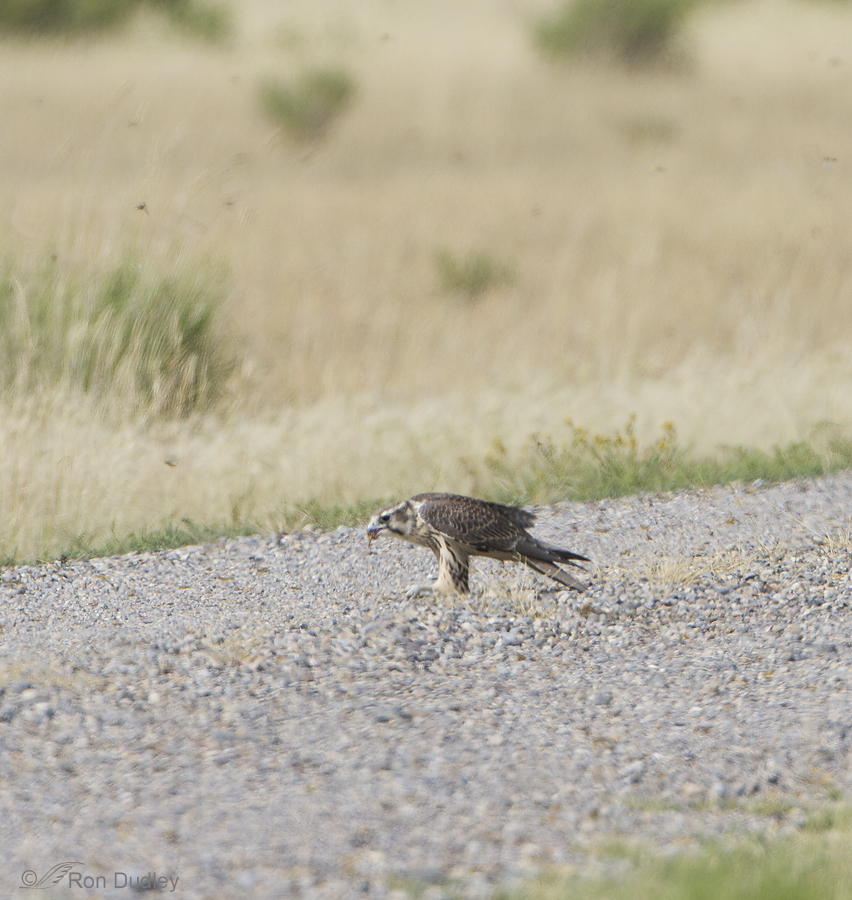
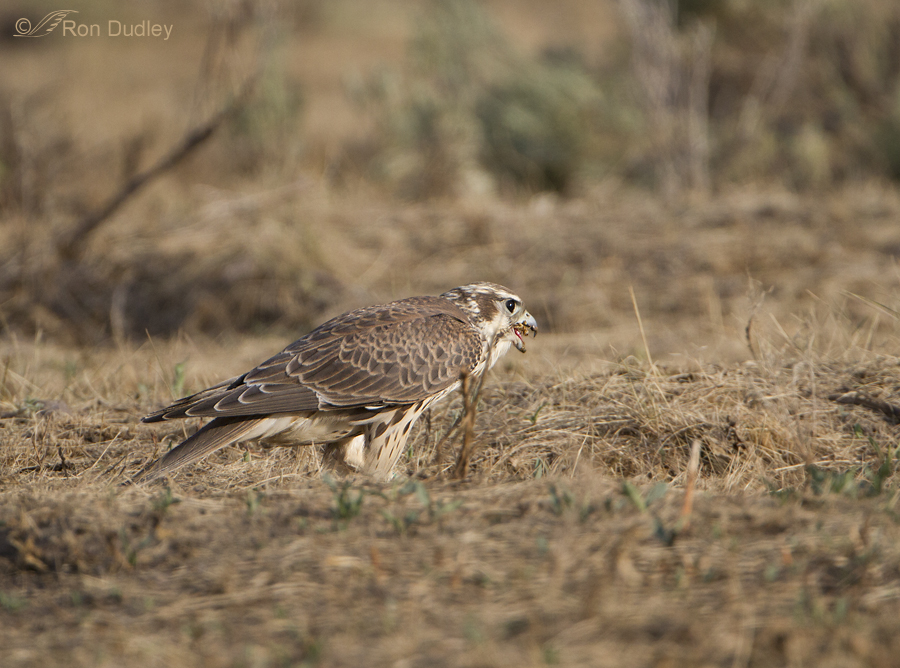
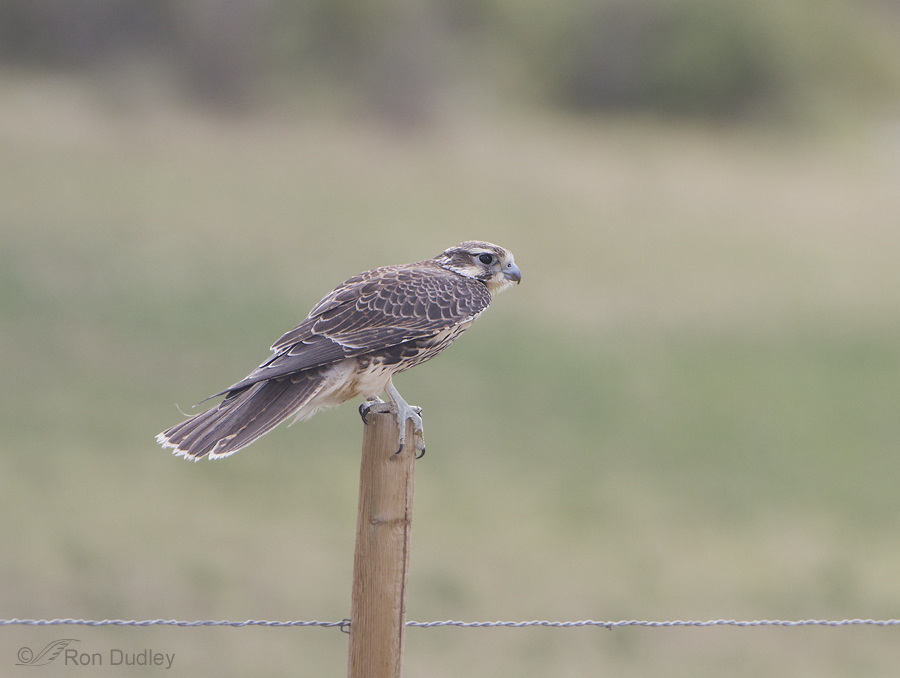
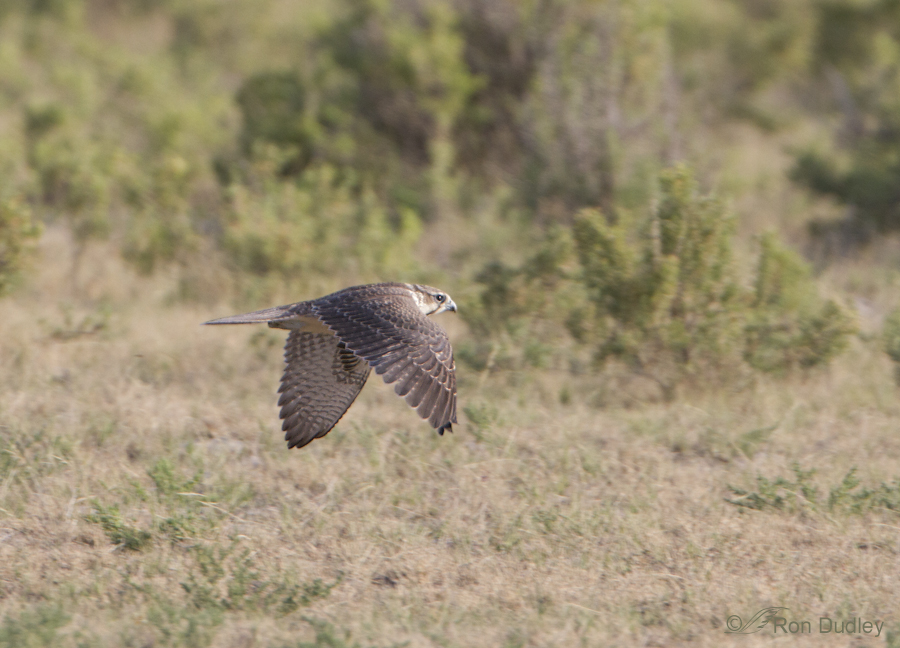
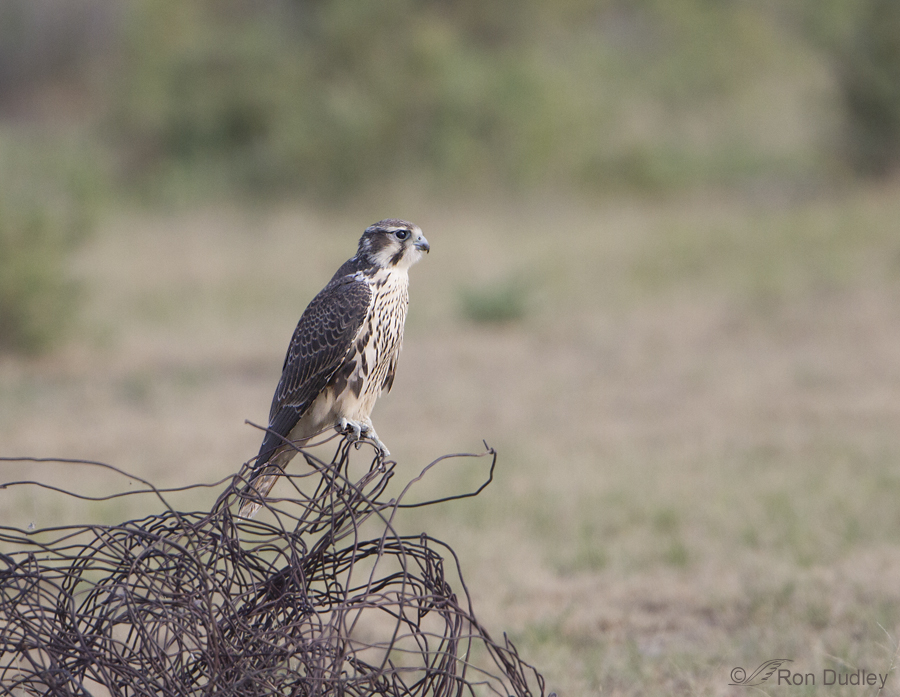
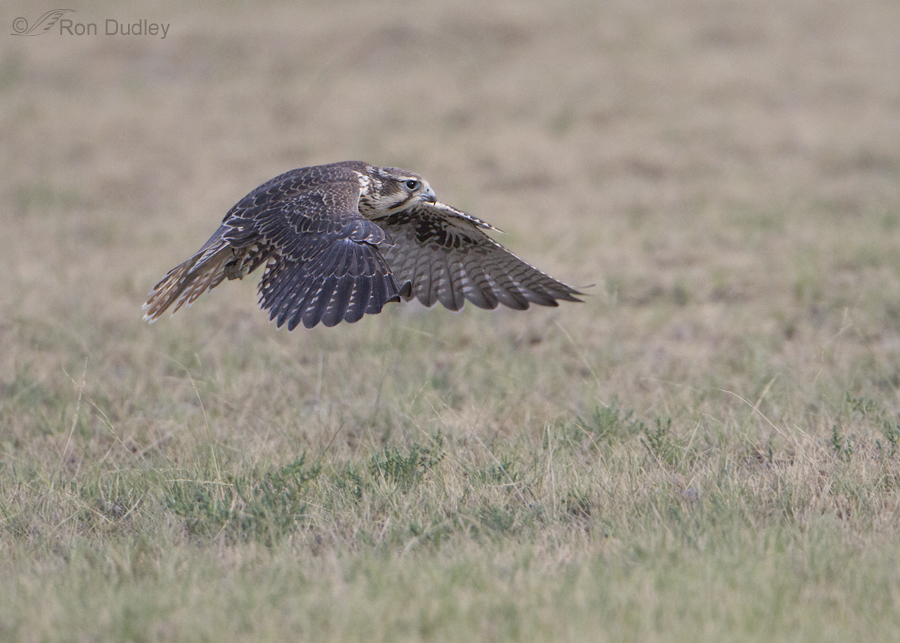
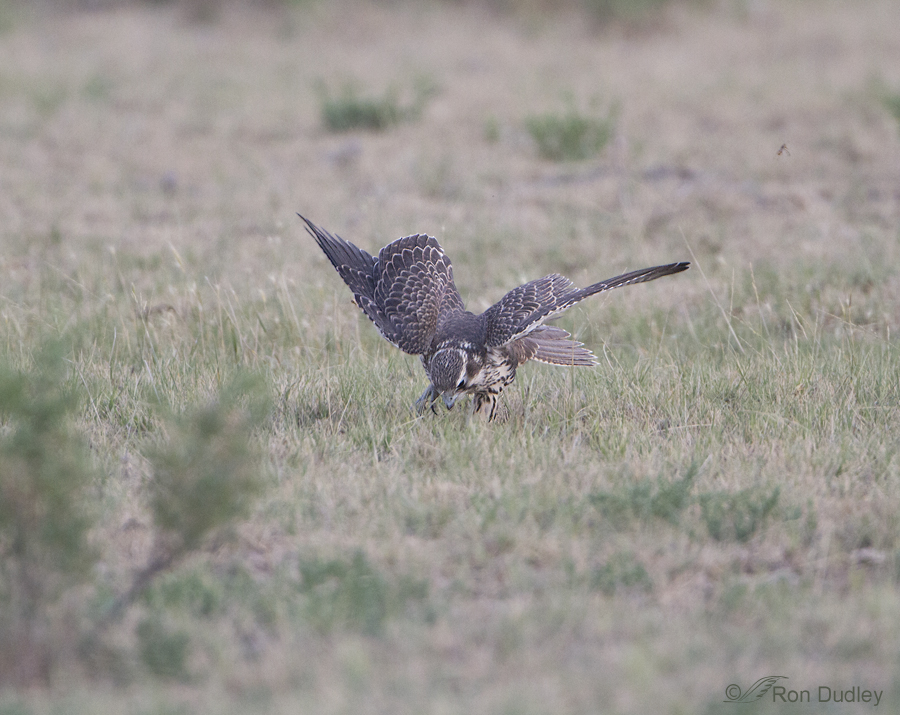
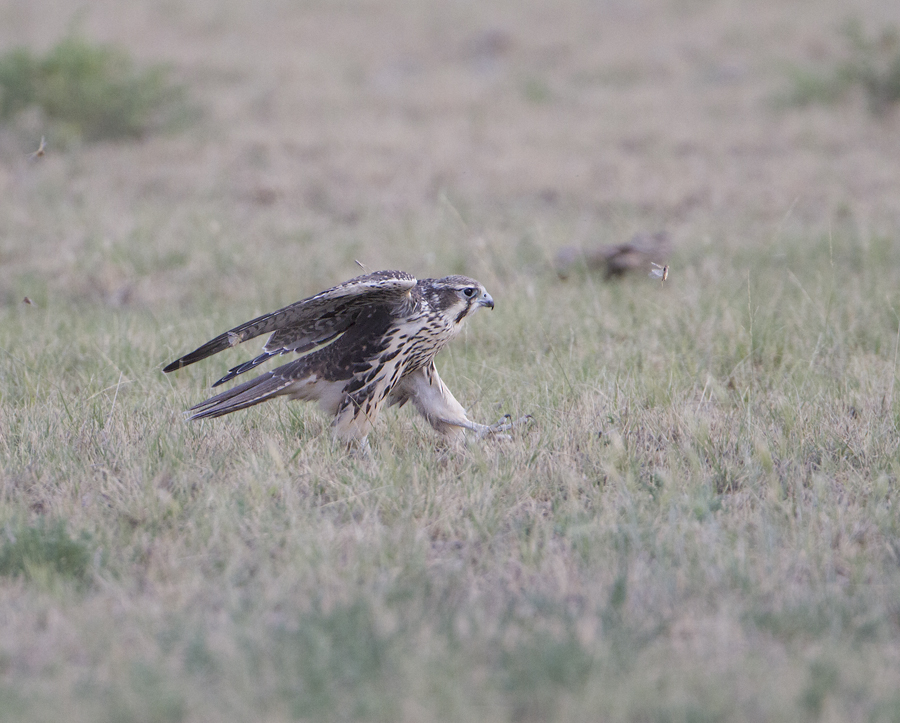
Oh man! I think I have a new favorite! Wow!
Wow Ron- you consistently put yourself in position to capture interesting behavior. The previous astute comments add up to an interesting discussion as well. Prairies aren’t generalists to the same degree as Red-tails when it comes to hunting and diet, but most all raptors are opportunistic in their own way. Prairies will indeed eat anything if they have to, and they use a surprisingly wide range of techniques to do it. (various flight and chase styles, perch hunting, poaching from others, hovering, or even letting the wind blow a duck to shore. Lol) In addition to their standard fare of small mammals and birds, I’ve seen Prairies pick off stray hoppers, beetles, scorpions, lizards, and even a snake, but have never witnessed this kind of Swainson’s-like dining. However, it makes sense when hungry unskilled juves are presented with a plentiful and easy protein source.
The “holding on to the pole for dear life” shot is a wonderful illustration of how BIG a big falcon’s feet are!
Insects are often the primary prey for many NA raptors as recent fledglings and juveniles learning to hunt. Some species even flock up to consume them from various families. The timing of many hatches coincides with many birds (including raptors) first efforts at hunting for live food). I’m not sure I would count BNA as much more than a very basic introduction to NA raptors (and even at that level errors are not uncommon). Far better sources are Eagles, Hawks and Falcons of the World, Brown & Amadon; Hawks, Eagles & Falcons of N.A., Johnsgard; if its falcons you want in particular its hard to beat Falcons of the World, Cade. There are also a few books out there specific to our various NA falcon species including the Prairie.
As for Peregrines never utilizing carrion is wise to never say never. Most would not think they would hunt and consume fish (either) but they have and may still.
Bill
Thanks for the references, Bill. I should (and just might) add some of them to my library, though I’m still a fan of BNA. One can never have too much reliable information.
As for “never say never”, it’s generally a wise axiom but I do know I’ll never, ever allow limburger cheese in my house again…
Insects are definately on the regular menu for BOP.
But I have to say, these are the best pictures of one actually hunting them down!
Great shots Ron…..keepin’ this page bookmarked for reference if its Ok with you.
Tim
Thank you, Tim. And it’s definitely “ok with me”.
Great post Ron. I love the insight into the life history of the Prairie Falcon. I’ve seen many raptors eating insects, which seems to fit as an insect is often an easy and nutritious meal. When times are tough I think a lot of the “rules” are bent, and you see birds eating things that they often do not. I had a friend share a photo of a Great Horned Owl eating carrion. You won’t find that in the literature, as they are thought to be rather snooty when it comes to diet. Thanks for yet another visually striking and informative post!
Nature is flexible (up to a point), Bryce – as you well know. Good thing for birds and for all of us.
What a beautiful,beautiful bird! Subtle colors, feather patterns and detail are wonderful…so glad you included shot you weren’t too crazy about ( it would be one of my best). Love the way it shows the feathering on the legs…so much to learn! Especially love last three frames.
Thanks very much, Patty. “So much to learn” is exactly right. Birds teach me something new almost every time I’m in the field.
I have never been fond of grasshoppers, so I applaud the Prairie Falcons for their good taste. Ha!
Thanks again for an informative post!
I remember you mentioning your “distaste” for grasshoppers in the past, Tana. Mia was shooting in the back seat of my pickup and had several of them go down the front of her shirt – bet that would have made you squirm!
Outstanding images and love seeing their hunting behavior as I’ve only seen them perched around here. My favorite is the second to last, showing off its amazing set of feathers, looks like a knights coat of armor. However the last one is great too because it reminds me of the term Kid in a candy store. So many yummy grasshoppers to choose from. Thanks for sharing and looking forward to tomorrows post.
Ha, “kid in a candy store” is perfect, Tanja. Thank you.